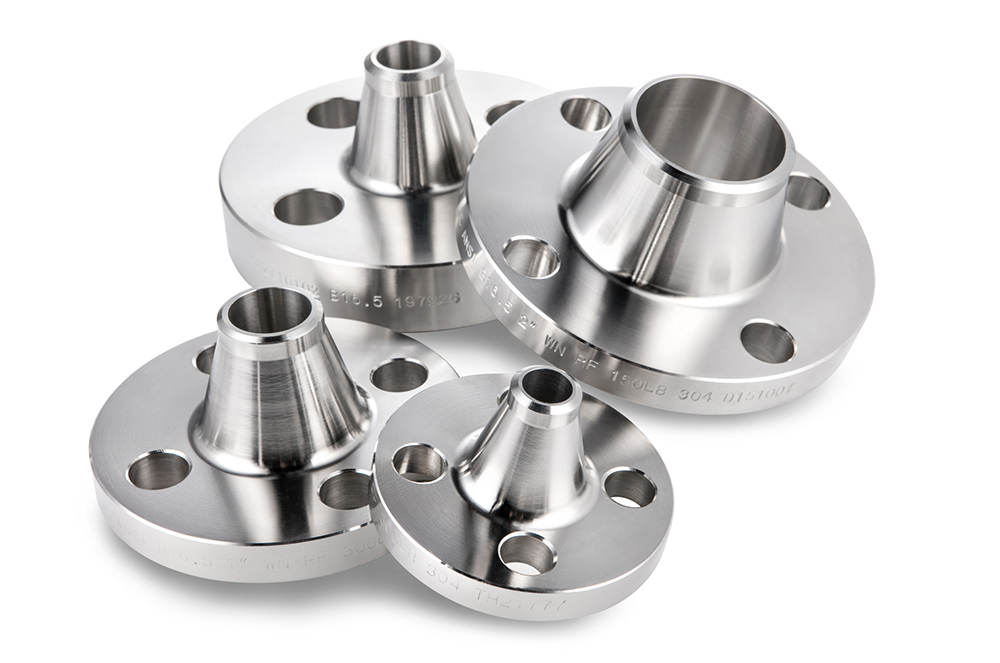Stainless steel flanges are critical components in industries ranging from oil refineries to pharmaceutical plants, yet corrosion causes over 40% of premature failures. A single corroded flange can lead to leaks costing upwards of $500,000 in downtime and repairs. This guide reveals seven science-backed strategies to combat corrosion and extend flange lifespan by 15–25 years.
1. Material Matters: Choosing the Right Alloy
Not all stainless steels resist corrosion equally. Match grades to your environment:
| Grade | Key Features | Ideal Applications | Corrosion Weakness |
|---|---|---|---|
| 304 | Budget-friendly, general use | Food processing, water systems | Chlorides >50 ppm |
| 316/L | Molybdenum-enhanced | Marine, chemical plants | High-temperature sulfuric acid |
| Duplex 2205 | Superior chloride resistance | Offshore platforms, seawater | Temperatures >300°C |
| Super Duplex | Highest pitting resistance (PREN ≥40) | Desalination plants | Improper heat treatment |
Case Study: A Norwegian oil platform switched from 316L to Super Duplex flanges, reducing replacement frequency from 18 months to 10+ years in North Sea conditions.

2. Surface Perfection: Treatments That Make a Difference
Surface defects accelerate corrosion initiation by 600%. Implement these treatments:
- Electropolishing: Achieves Ra 0.2–0.5 μm, removes embedded iron particles
- Passivation: Nitric acid (20–50% vol.) bath restores chromium oxide layer
- Xylan Coating: Reduces friction corrosion in high-velocity pipelines by 70%
3. Smart Installation: Avoiding Hidden Damage
Improper handling causes 35% of early corrosion:
- Use nylon slings instead of steel cables during lifting
- Protect flange faces with temporary PVC caps until installation
- Follow ASME PCC-1 bolt torque sequence to prevent stress concentrations
4. Environmental Control: Managing Aggressive Factors
| Threat | Safe Threshold | Mitigation Strategy |
|---|---|---|
| Chloride ions | <50 ppm for 304 | Install desiccant breathers |
| Temperature | <60°C for 316 in acids | Insulate flanges in hot zones |
| pH Levels | 6–8 for most grades | Add corrosion inhibitors |
Pro Tip: Monitor micro-environments—localized conditions under insulation can be 10x more corrosive than ambient air.
5. Advanced Protection Systems
- Cathodic Protection:
- Sacrificial anodes for submerged flanges (current density: 10–20 mA/m²)
- Impressed current systems for large pipelines (-0.85 V vs Cu/CuSO4)
- Vapor Phase Inhibitors (VPI):
- Molybdate-embedded packaging protects stored flanges for 2+ years
6. Proactive Maintenance: Catching Issues Early
Implement this inspection schedule:
| Frequency | Method | Critical Checks |
|---|---|---|
| Monthly | Visual + Borescope | Pitting, crevice corrosion signs |
| Quarterly | Ultrasonic Thickness (UT) | Wall loss >10% original |
| Annually | Dye Penetrant Testing | Stress corrosion cracks |
| Biannually | Eddy Current | Surface-breaking defects |
Failure Analysis: 80% of flange corrosion starts at gasket interfaces—always inspect sealing surfaces.
7. Digital Monitoring: The Future of Corrosion Control
- Wireless Corrosion Sensors: Measure galvanic current (1–100 μA range)
- AI Predictive Models: Analyze historical data to forecast failure 6–12 months ahead
- Digital Twins: Simulate corrosion rates under different operating scenarios
ROI Example: A chemical plant using smart flanges cut unplanned downtime by 65% and maintenance costs by 40%.
Corrosion Repair Protocol
When damage occurs:
- Mechanical Cleaning: Use non-metallic abrasives (plastic media blasting)
- Weld Repair: ER316L filler for 316 flanges, post-weld heat treat at 1050°C
- Localized Coating: Apply HVOF-sprayed WC-10Co-4Cr for severe pitting
Conclusion
Effective stainless steel flange corrosion prevention requires a multi-layered approach—from intelligent material selection to cutting-edge monitoring technologies. By implementing these seven strategies, industrial operators can achieve:
Compliance with NACE SP0193 and API 570 standards
90% reduction in corrosion-related failures
50% longer mean time between replacements
